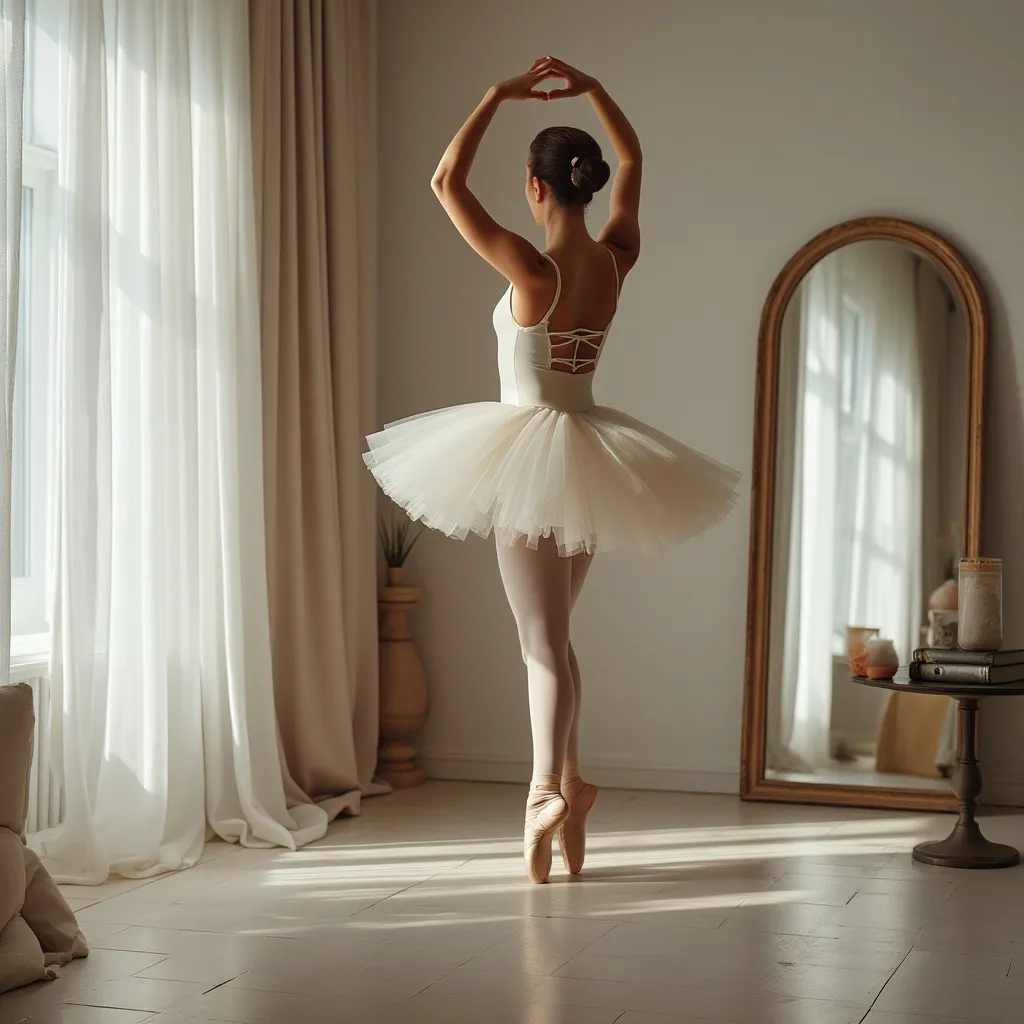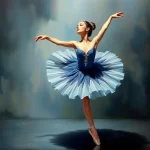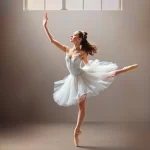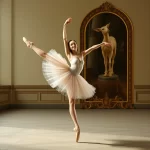The Curriculum of a Ballet School: What Students Learn

Introduction
Ballet is a highly disciplined and artistic form of dance that has captivated audiences for centuries. The journey to becoming a proficient ballet dancer is rigorous and requires a structured curriculum that encompasses various aspects of dance, physical conditioning, and theoretical knowledge. This article delves into the comprehensive curriculum of a ballet school, detailing what students learn at different stages of their training.
The Foundation: Basic Ballet Techniques
Barre Exercises
The foundation of ballet training begins at the barre. Barre exercises are essential for developing strength, flexibility, and proper alignment. These exercises include pliés, tendus, dégagés, and rond de jambe, among others. Each movement is designed to build muscle memory and improve balance, which are crucial for more advanced techniques.
Center Work
After mastering barre exercises, students move to center work, where they practice movements without the support of the barre. This includes adagio (slow, controlled movements), allegro (quick, lively movements), and pirouettes (turns). Center work helps dancers develop coordination, control, and the ability to perform complex sequences.
Across the Floor
Across the floor exercises involve traveling movements such as waltz steps, chassés, and grand jetés. These exercises are designed to improve a dancer’s ability to move gracefully and efficiently across the stage. They also help in building stamina and spatial awareness.
Advanced Techniques and Specializations
Pointe Work
Pointe work is a significant milestone in a ballet dancer’s training. It involves dancing on the tips of the toes using specially designed shoes called pointe shoes. Pointe work requires immense strength in the feet, ankles, and legs, as well as a high level of technical proficiency. Students typically begin pointe work after several years of foundational training.
Variations and Repertoire
As students progress, they begin to learn variations and repertoire from classical ballets such as “Swan Lake,” “The Nutcracker,” and “Giselle.” These pieces are often performed in recitals and competitions. Learning variations helps students understand the stylistic nuances and historical context of different ballets.
Partnering
Partnering, or pas de deux, is an essential aspect of ballet training. It involves two dancers working together to perform lifts, turns, and other coordinated movements. Partnering requires trust, communication, and a deep understanding of each other’s strengths and weaknesses. It is often introduced at the intermediate or advanced levels of training.
Supplementary Training
Conditioning and Strength Training
In addition to dance-specific training, ballet students often engage in conditioning and strength training exercises. These may include Pilates, yoga, and weight training. Such exercises help in building core strength, flexibility, and overall physical fitness, which are crucial for preventing injuries and enhancing performance.
Character Dance
Character dance is a stylized form of dance that incorporates elements of folk and national dances. It is often included in ballet performances to add cultural and historical context. Learning character dance helps students develop versatility and a broader understanding of dance as an art form.
Contemporary and Modern Dance
Many ballet schools incorporate contemporary and modern dance into their curriculum. These styles allow students to explore different movement vocabularies and express themselves in new ways. Contemporary dance, in particular, emphasizes fluidity and improvisation, which can complement the structured nature of classical ballet.
Theoretical Knowledge
Dance History
Understanding the history of ballet is crucial for any serious dancer. Ballet schools often include dance history classes that cover the evolution of ballet from its origins in the Italian Renaissance courts to its development in France and Russia. Students learn about influential choreographers, dancers, and significant works that have shaped the art form.
Music Theory
Music is an integral part of ballet, and understanding its nuances can greatly enhance a dancer’s performance. Music theory classes teach students about rhythm, tempo, and musical phrasing. They also learn to identify different musical styles and composers commonly associated with ballet.
Anatomy and Kinesiology
Knowledge of anatomy and kinesiology is essential for preventing injuries and optimizing performance. Ballet schools often include classes on human anatomy, focusing on the musculoskeletal system. Students learn about the mechanics of movement, proper alignment, and injury prevention techniques.
Performance Opportunities
Recitals and Showcases
Performance opportunities are a vital part of a ballet student’s education. Recitals and showcases allow students to demonstrate their skills and gain valuable stage experience. These performances often include a mix of classical variations, contemporary pieces, and original choreography.
Competitions
Many ballet schools encourage students to participate in local, national, and international competitions. Competitions provide a platform for dancers to challenge themselves, receive feedback from industry professionals, and gain exposure. They also foster a sense of camaraderie and healthy competition among peers.
Workshops and Masterclasses
Workshops and masterclasses with guest artists and choreographers offer students unique learning experiences. These sessions provide insights into different teaching styles and techniques, allowing students to broaden their horizons and refine their skills.
FAQ
What age should children start ballet training?
Children can start ballet training as early as 3 to 4 years old. At this age, classes focus on basic movements, coordination, and developing a love for dance. Formal ballet training typically begins around age 7 or 8.
How many hours a week do ballet students train?
The number of training hours varies depending on the student’s level and goals. Beginners may train 2-3 hours per week, while advanced students often train 15-20 hours per week or more. Professional training programs can require even more intensive schedules.
Do ballet students need to follow a specific diet?
While there is no one-size-fits-all diet for ballet students, proper nutrition is crucial for maintaining energy levels and overall health. A balanced diet rich in proteins, carbohydrates, healthy fats, and essential vitamins and minerals is recommended. Hydration is also important, especially during intense training periods.
Is it necessary to have a background in other dance styles?
While not necessary, having a background in other dance styles such as jazz, contemporary, or modern dance can be beneficial. It can enhance a dancer’s versatility and provide additional movement vocabulary that can be incorporated into ballet training.
What are the career opportunities for ballet dancers?
Career opportunities for ballet dancers include performing with professional ballet companies, teaching at dance schools, choreographing, and working in related fields such as dance therapy or arts administration. Some dancers also pursue careers in musical theater, film, and television.
Conclusion
The curriculum of a ballet school is comprehensive and multifaceted, designed to develop well-rounded dancers who excel in both technical proficiency and artistic expression. From foundational techniques to advanced specializations, supplementary training, and theoretical knowledge, each component plays a crucial role in a dancer’s education. Performance opportunities further enhance their skills and provide valuable stage experience. Whether aspiring to a professional career or simply seeking personal growth, ballet training offers a rich and rewarding journey.




